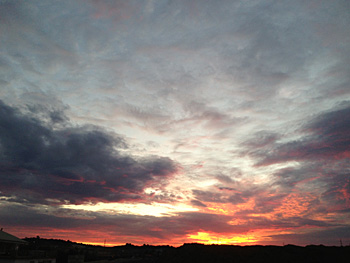References

1. Collard, L. (2008) Kura, Yeye, Boorda ‘From the Past, Today and the Future’. In Morgan, S., Mia, T. & Kwaymullina, B. (Eds.), Heartsick for Country: Stories of Live, Spirit and Creation (pp.60-80). Fremantle, Western Australia: Fremantle Press.
2. Collard, L., Palmer, D. (2008) Looking for the Residents of Terra Australis: The Importance of Nyungar in Early European Coastal Exploration. In P. Veth, P. Sutton, and M. Neale (Eds.), Strangers on the Shore: Early Coastal Contacts in Australia (pp. 181-197). Canberra: National Museum of Australia.
3. Collard, L., Harben, S. & van den Berg, R. (2007) Nyungar Tourism in the South West Region of Western Australia: Three Nyungar Case Studies. In J. Buultjens & D. Fuller (Eds.), Striving for Sustainability: Case Studies in Indigenous Tourism (pp. 403-436). Lismore, New South Wales: Southern Cross University Press.
4. Ensor, J. (2000) Reconciliation – The Long March, Message posted to http://www.onlineopinion.com.au/view.asp?article=1069
5. Gomersall, A.M., Davidson, G., Ho, R. (2000) Factors Affecting Acceptance of Aboriginal Reconciliation among Non-Indigenous Australians, Australian Psychologist, 35: 188-127.
6. Goodchild, B. (2010) Manager of geographical names and addresses, Landgate, personal communication, 11 May 2010.
7. Green, N. (1984) Broken spears: Aborigines and Europeans in the Southwest of Australia, Perth: Focus Focus Education Services.
8. Haebich, A. (1992) For Their Own Good: Aborigines and Government in the South West of Western Australia 1900 - 1940, Nedlands: University of Western Australia Press.
9. Haebich, A., Delroy, A. (1999) The Stolen Generations - the Separation of Aboriginal Children from Their Families in Western Australia, Perth: Western Australian Museum.
10. Holloran, M. (2007) Indigenous Reconciliation in Australia; Do Values, Identity and Collective Guilt Matter? Journal of Community and Applied Social Psychology, 17: 1-18.
11. Douglas, W.H. (1976). The Aboriginal Languages of the South-West of Australia. Canberra: Australian Institute of Aboriginal Studies. ISBN 0-85575-050-2.
12. Ginsberg, F. (1994) Embedded Aesthetics: Creating a Discursive Space for Indigenous Media. Cultural Anthropology, 9 (3): 365-382.
13. Pedersen, A., Beven, J., Walker, I., Griffiths, B. (2004) Attitudes towards Indigenous Australians: The Role of Empathy and Guilt, Journal of Community and Applied Social Psychology, 14: 233-249.
14. Rienits R (Ed) (1971) Australia’s Heritage: The Making of a Nation. Vol.1. The Great South Land. Sydney: Hamlyn House.
15. Seddon, G. (2004) Sense of Place: A Response to an Environment, the Swan Coastal Plain Western Australia. Facsimile ed. Melbourne: Blooming Books.
16. Sweeney, S., Johnson, J., Trimble, K. (1996) Unfinished Business: Australians and Reconciliation. Canberra: Australian Government publishing Service.
17. Tindale, N.B. (1974) Aboriginal Tribes of Australia: Their Terrain, Environmental Controls, Distribution, Limits and Proper Names. Berkeley Calif:. University of California.
18. Vanclay, F., Higgins, M., Blackshaw, A. (Eds) (2008) Making Sense of Place: Exploring Concepts and Expressions of Place through Different Senses and Lenses, Canberra: National Museum of Australia Press.


